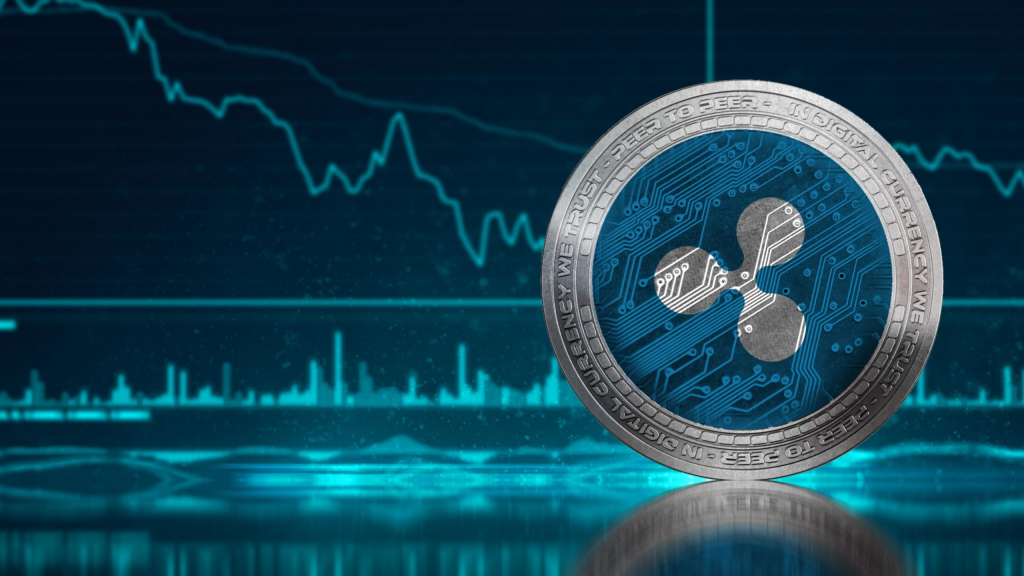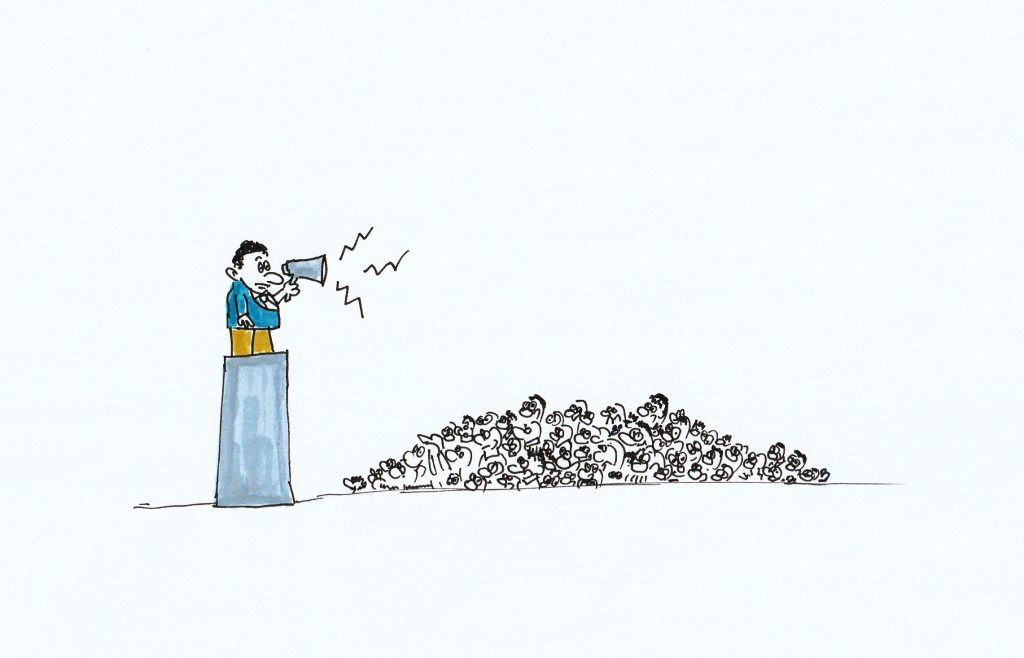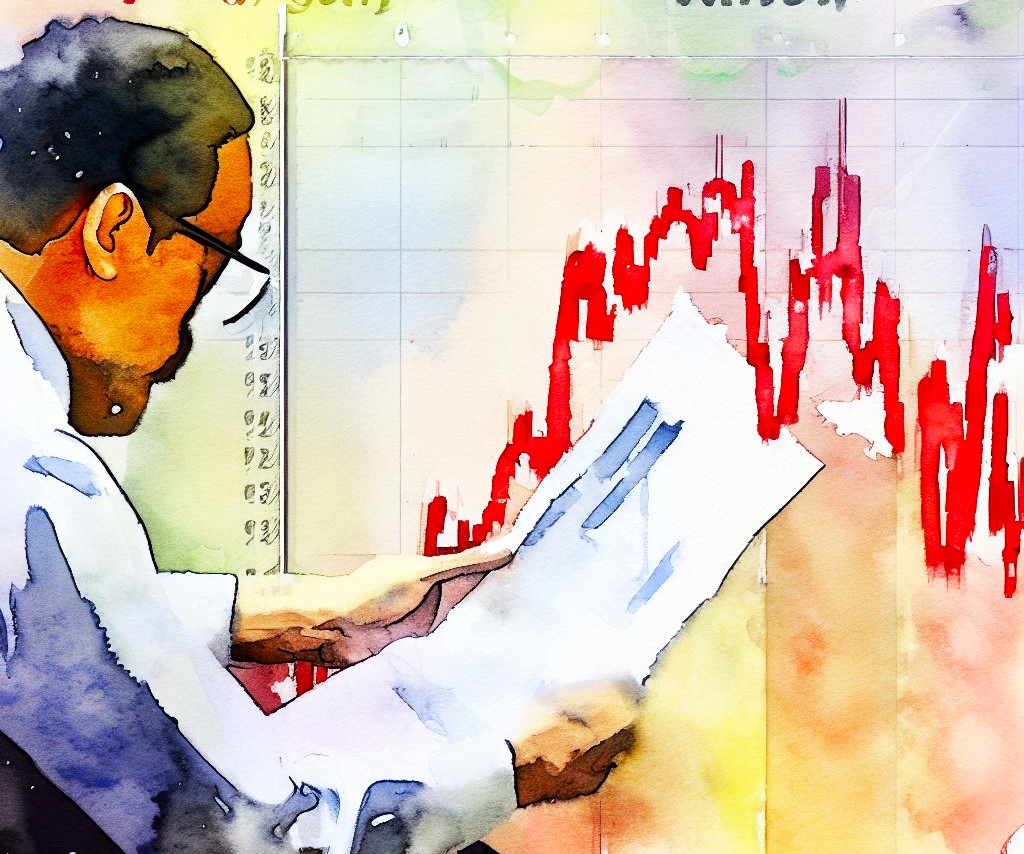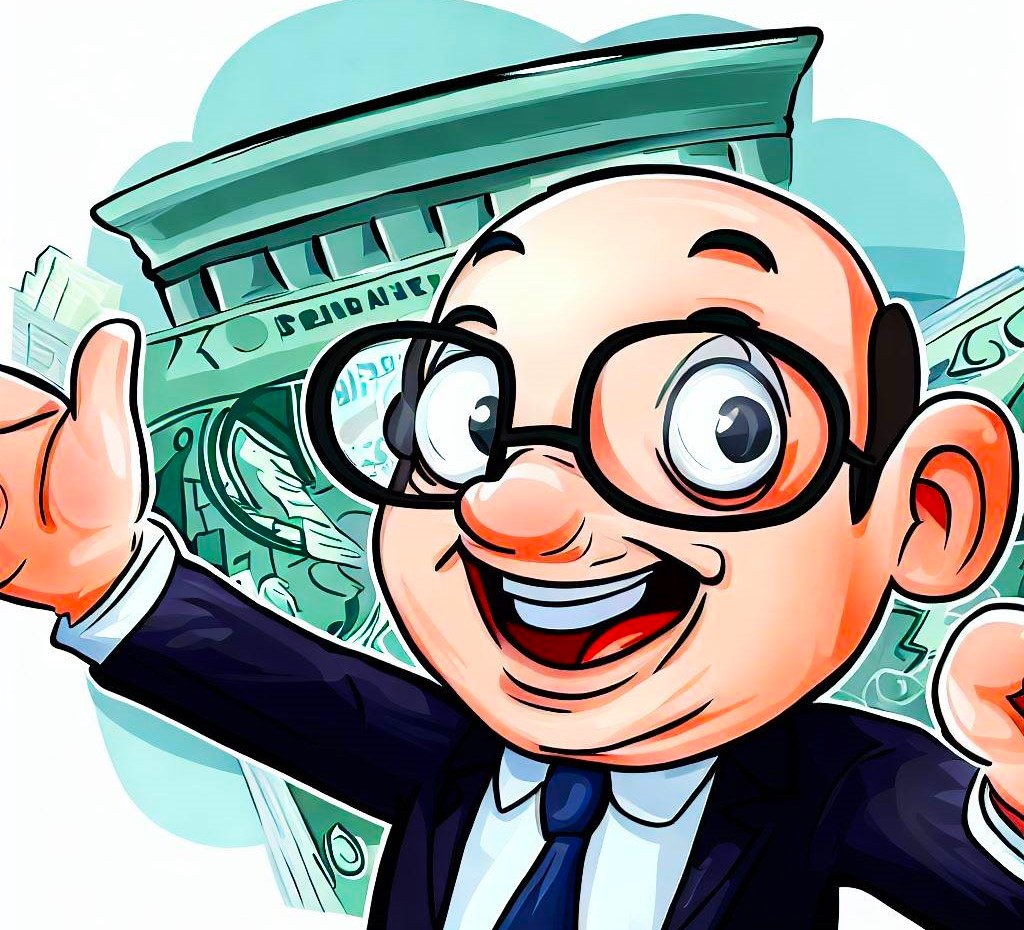
‘Party venue closed!’ – Resident DJ has left the building’


This means that one British pound can buy 1.22 U.S. dollars at the current market rate. The exchange rate fluctuates depending on various factors such as supply and demand, interest rates, inflation, trade balance, and political stability.
The British pound has been weakening against the U.S. dollar since the Brexit referendum in 2016, when the UK voted to leave the European Union. The uncertainty and instability caused by the Brexit process have reduced the confidence and attractiveness of the British currency in the global market. The U.S. dollar, on the other hand, has been strengthening due to its status as a safe haven and a reserve currency in times of crisis.

The pound reached $1.0327 at one point in late September 2022, its lowest since Britain went decimal in 1971. It also fell more than 1% against the euro to about 86.80p, its lowest level since May 2020.
The current exchange rate of 1.22 USD per GBP is near the lowest point in the last 30 and 90 days, which was 1.2383 USD per GBP.

The highest point in the same period was 1.3128 USD per GBP. The average exchange rate in the last 30 days was 1.2563 USD per GBP, and in the last 90 days was 1.2721 USD per GB pound.

Heraclitus was an ancient Greek pre-Socratic philosopher from the city of Ephesus, which was then part of the Persian Empire. Little is known of Heraclitus’s life. He wrote a single work, only fragments of which have survived.

Cathie Wood is an American investor and the founder, CEO and CIO of ARK Invest, an investment management firm that focuses on disruptive innovation. She is known for her bullish views on Tesla, DeepMind, and many other AI companies.
Cathie Wood is a fan of DeepMind, an artificial intelligence research lab acquired by Google in 2014 and founded in 2010. She reportedly says it is ‘one of the best AI companies in the world’ and that the ‘AI revolution’ will ‘change everything’.
She also says that Tesla is the ‘biggest AI opportunity in the world’ today. She believes that Tesla has a huge advantage in data collection and innovation, and that it has just started its growth potential.
Additionally, Cathie Wood has been betting on other AI stocks, such as C3.ai, UiPath, Exact Sciences, and Upstart. She thinks these companies have strong prospects in various fields, such as cloud computing, automation, healthcare, and lending.
DeepMind is a British-American artificial intelligence research lab that is a subsidiary of Google. It was founded in 2010 and acquired by Google in 2014. DeepMind is known for creating neural network models that can learn how to play video games, solve complex problems, and mimic human intelligence. Some of its famous products are AlphaGo, AlphaZero, AlphaFold, and Flamingo.

DeepMind’s mission is to ‘solve intelligence and use it to make the world a better place‘. It has been involved in various fields, such as healthcare, climate change, computer systems, and board games.
DeepMind also collaborates with Google Cloud to enhance its solutions for customers
NOTE: Always do your own research!
Osiris-Rex is a NASA mission that aims to collect and return a sample from asteroid Bennu, which is believed to be a remnant of the early solar system. The mission hopes to learn more about the origins of life on Earth and the potential for asteroid mining in the future.
Osiris-Rex stands for Origins, Spectral Interpretation, Resource Identification, Security-Regolith Explorer. The spacecraft launched in 2016 and arrived at Bennu in 2018. It spent two years mapping and studying the asteroid before successfully collecting a sample of about 300 grams (10.6 ounces) of dust and rocks in October 2020.

The sample capsule is now on its way back to Earth and is expected to land in Utah on September 24, 2023. Scientists are eager to analyze the material and look for clues about how the solar system formed and how organic molecules that are essential for life were delivered to Earth.
Osiris-Rex is also planning an extended mission to visit another near-Earth asteroid called Apophis in 2029. Apophis is considered a potentially hazardous asteroid because it has a small chance of hitting Earth in the future. Osiris-Rex will observe and measure Apophis to improve our understanding of its orbit and characteristics.

It will make a fireball in the sky but a heat shield will protect the craft. Parachutes will then deploy to slow the descent and bring it to a gentle touchdown in Utah’s West Desert.
Bringing with it a special space cargo that may help the human race discover the origin of life.

TikTok is a popular social media app that allows users to create and share short videos. But, it has faced some controversies regarding its algorithm, design, and data protection.
The company was fined $368 million in Europe for failing to protect children’s data. The Irish Data Protection Commission, which oversees TikTok’s activities in the European Union, said that the company had violated the bloc’s signature privacy law.
An investigation by the DPC found that in the latter half of 2020, TikTok’s default settings didn’t do enough to protect children’s accounts.
TikTok drove online ultra online ‘frenzies’ that encouraged anti-social behaviour to spill over into the real world, a BBC Three investigation revealed.
Ex-employees said that the issue was not being tackled for fear of slowing the growth of the app’s business. These ‘frenzies’ were evidenced by interviews with former staffers, app users and BBC analysis of wider social media data. They included false murder accusations, interference in police investigations, school vandalism, and riots.

The algorithm and design means people are seeing videos which they wouldn’t normally be recommended – which, in turn, incentivise them to do unusual things in their own videos on the platform.
Former employees likened these frenzies to ‘wildfires’ and described them as ‘dangerous’, especially as the app’s audience can be young and impressionable.
NatWest customers reported money missing from their accounts after making a cash deposit. The bank has said an issue with its cash deposit machines has been now resolved
Customers shared their concerns on social media on Thursday 21st September 2023 that recently-deposited cash was not showing up in their account balance.
Early on Friday 22nd September 2023, NatWest said the issue had been resolved and that no-one would be left out of pocket.
Some customers had reported going overdrawn because of the issue and expressed concern they would be charged fees.
In a statement, NatWest said, ‘Cash payments to a small number of accounts have been delayed and the issue is now resolved and customer accounts are being updated’.
It is unclear how many people were affected by the issue.
It is also unclear why this happened.
UK interest rates have been left unchanged at 5.25% by the Bank of England (BoE).
The decision comes a day after figures revealed an unexpected slowdown in UK nflation in August 2023.
The Bank had previously raised rates some14 times in a row to tackle inflation, leading to increases in mortgage payments, business loans and consumer borrowing. But it also delivered higher savings rates.
The inflation target for the Bank of England is 2%
The latest move raises the prospect that this cycle of rate increases may have peaked.
Martin Luther King Jr. was a civil rights leader and Nobel Peace Prize laureate who advocated for nonviolent resistance against racial oppression in the United States.
He is best known for his famous ‘I Have a Dream’ speech, delivered at the March on Washington in 1963, where he called for an end to racism and a vision of a society where people are judged by the content of their character, not the colour of their skin.
Martin Luther King Jr. was assasinated in 1968.

Wegovy is a brand name for ‘Semaglutide‘, a prescription medicine used for weight loss in obese or overweight adults with other weight-related medical issues. It works by regulating appetite and reducing calorie intake, leading to weight loss and helping with weight management.
Wegovy was launched in the UK on 4th September 2023 and is available on the NHS as an ‘option‘ for weight management in line with NICE guidance, alongside a reduced-calorie diet and increased physical activity. However, only people with the highest medical need may qualify for the drug, as it is in short supply and its use will be restricted – but celebrities have direct access – do they have the ‘highest medical needs’? Of course they do.
Wegovy has been shown to be effective in clinical trials, achieving up to a 15% reduction in body weight after one year. It has also been found to reduce the risk of a heart attack or stroke in obese people with cardiovascular disease by 20%.
To get Wegovy on the NHS, eligible adults would need a referral to an NHS specialist weight management service, which would usually be made by a GP. Alternatively, Wegovy can be obtained privately, but it may be expensive and not covered by insurance.

Shares rose after the Danish pharmaceutical giant, Novo Nordisk, launched the popular drug in the UK.
At the close of trading on Monday, 4th September 2023, the company had a stock market valuation of $428bn (£339bn).
The drug is now available on the National Health Service in the UK and also via private outlets.
Wegovy is an obesity treatment that is taken once a week which tricks people into thinking that they are already full, so they end up eating less and losing weight.
Famous personalities such as Elon Musk are among the reported users of the drug, which has gained traction in Hollywood and with the public more widely since it was approved by regulators in the US in 2021.
Wegovy and Ozempic – a diabetes treatment with similar effects – have been described as ‘miracle’ drugs. Would that be a ‘miracle for the user or for the pharmaceutical company – or both perhaps?
Experts warn the drug is not a quick fix nor a ‘substitute for a healthy diet and exercise’.
In trials, users often put weight back on after stopping treatment.
There has been a global shortage of the drug, so only limited is awailable for the NHS in the UK.
The company said it will continue to restrict global supplies as it works to ramp up manufacturing.
While the findings still have to be fully reviewed, experts agreed the results were potentially significant.
Exercise, eat less and take… Wegovy!!
William Shakespeare was an English playwright, poet and actor. He is widely regarded as the greatest writer in the English language and the world’s pre-eminent dramatist. He is often called England’s national poet and the ‘Bard of Avon’ (or simply ‘the Bard’).
A bard is a poet, especially one who writes or recites epic or heroic poems. This is the most common and literary meaning of the word.
A bard is also a term for a professional poet-singer or minstrel in ancient Celtic cultures, who was employed by a patron to praise their deeds and ancestors, and to preserve historical and traditional knowledge in verse.
The ‘bards’ were highly respected and influential in Gaelic and Welsh societies, and their poems were often accompanied by musical instruments such as the harp.

The Federal Reserve held interest rates steady in a decision released Wednesday 20th September 2023, while also indicating it still expects one more hike before the end of the year and fewer cuts than previously indicated next year.
That final increase, if realised, would be it for now according to data released at the end of the Fed two-day meeting. If the Fed goes ahead with the move, it would be the twelfth rate hike since policy tightening began in March 2022.
Markets had fully priced in no move at this meeting, which kept the fed funds rate targeted in a range between 5.25%-5.5%, the highest in some 22 years. The rate fixes what banks charge each other for overnight lending but also affects many other forms of consumer debt too.
While the no-hike was expected, there was plenty of uncertainty over where the rate-setting Federal Open Market Committee (FOMC), would go from here.
Judging from reports released Wednesday 20th September 2023, the bias appears towards more restrictive policy and a higher-for-longer approach to interest rates.
The possibilities of how high the XRP price can go has triggered heated debate among crypto community members over the past week. One particular forecast put the price of the cryptocurrency as high as $10,000 as Ripple advances in the payments sector. However, the validity of this prediction is still heavily debated, leading crypto analysts to weigh in on whether this price point is even possible.
Indicators and investors alike turned bullish for the XRP price following Ripple’s partial victory over the United States Securities and Exchange Commission (SEC) in July 2023. The price of the coin had risen over 60% in the days following the ruling as interest soared.
The token’s rally has since slowed down since then, wiping the majority of its gains from the ruling. However, crypto analysts remain bullish. One analyst put the XRP price at $130, while another analyst sees it going as high as $500.
XRP’s trading volumes, which have been nearly consistent above $1 billion, also show that investors are heavily attached to the coin. This sustained bullishness is further fueled by Ripple’s exploits in the payments sector, as well as working with various countries on their Central Bank Digital Currencies (CBDCs).
Other sources are more conservative and estimate that XRP price could range from $0.50 to $2.18 by the end of 2023, depending on the outcome of the SEC lawsuit, the development of the Ripple protocol, and the market conditions. Some sources also provide long-term predictions for XRP price based on historical trends.
For example, one source suggests that XRP could reach $14.21 by 2040 and $106.14 by 2050 if it follows Bitcoin’s growth trajectory over the past five years.
XRP is a cryptocurrency that powers the Ripple network, which is a decentralized platform for cross-border payments. XRP aims to provide fast, cheap, and secure transactions for individuals and institutions around the world.
XRP price predictions are based on various factors, such as the demand and supply of XRP, the adoption and innovation of the Ripple protocol, the regulatory environment, the competition from other cryptocurrencies, and the overall market sentiment.

According to some sources, XRP price could reach as high as $100-$500 in the next four to seven months, based on the recent ruling that XRP is not a security and the potential growth of Ripple’s partnerships in the payments space. However, this is a very optimistic scenario that assumes a high level of adoption and innovation of the Ripple network.
However, these predictions are not investment advice and should be taken with a ‘pinch of salt’. The cryptocurrency market is very volatile and unpredictable, and XRP price could be influenced by many factors that are beyond anyone’s control. Therefore, it is advisable to do your own research and analysis before making any financial decisions involving XRP or any other cryptocurrency or any investment.
NOTE: These are not recommendations. Investments may go up or down. Your money is at risk!
This is not advice! Always do your own research!
RESEARCH! RESEARCH! RESEARCH!

UK Prime Minister Rishi Sunak is reportedly planning to water down some of Britain’s climate commitments, saying the country must fight climate change without penalising workers and consumers.
Sunak issued a statement Tuesday in response to a BBC report saying the prime minister is considering extending deadlines for bans on new petrol and diesel cars – currently due in 2030 —- and on new natural-gas home heating.
The news drew dismay from environmental groups, opposition parties and some members of Sunak’s Conservative Party. It broke as senior politicians from the U.K. and around the world gather at the United Nations General Assembly in New York, where Biden and Yellen have placed climate high on the agenda.
Senior Tories who have championed net zero policies are reportedly furious at Sunak’s plans to delay or water down green measures. They warn that the decision will cost the U.K. jobs, inward investment and future economic growth that could have been theirs by committing to the industries of the future.
Home Secretary Suella Braverman says she backs Rishi Sunak’s expected shift on how the UK gets to net zero carbon emissions.
‘We’re not going to save the country by bankrupting the British people,’ she told BBC Breakfast.
It must be true, I’ve just seen it on the news. Is the UK broke? Is this the real reason for the climate roll-back?
‘We’re not going to save the country by bankrupting the British people’.
Does the UK have the money? Is it a too big-a-burden for the UK tax payer? Can the UK generate enough ‘POWER’ from renewables? The UK needs fossil fuels?
Most of the world still needs fossil fuels!
Are we really ready to switch yet? Renewables and fossil fuels will have to work hand-in-hand for some time yet.
According to the Office for National Statistics (ONS), the UK’s inflation rate dropped unexpectedly in August 2023 to its lowest level since the start of Russia’s invasion of Ukraine, which led to sharp rises in energy and food costs which were already on the rise due to the pandemic.
The Consumer Prices Index (CPI) rose by 6.7% in the 12 months to August 2023, down from 6.8% in July. The Consumer Prices Index including owner occupiers’ housing costs (CPIH) rose by 6.3% in the 12 months to August 2023, down from 6.4% in July.
The ONS said that the main factors behind the fall in inflation were lower prices for clothing, footwear, and second-hand cars, partly offset by higher prices for transport services and recreational goods.

The ONS also said that the inflation rate was still high compared with historical levels, and that it expected it to rise further in the coming months due to increases in energy bills and supply chain pressures.
You can find more details and data about the UK inflation and price indices on the ONS website or on the Consumer price inflation, UK: August 2023 time series.
Chancellor Jeremy Hunt said the news showed ‘the plan to deal with inflation is working’. Well Jeremy, your comments are encouraging – if you truly believe a 0.1% fall in inflation is ‘working‘. Where were you when the Bank of England lost control of the ‘2% inflation remit’.

Where were you when the excessive ‘uncontrolled’ government borrowing infected the UK’s economy? With all that ‘free’ money sloshing around the system, what did you really expect would happen..?
John Ronald Reuel Tolkien CBE FRSL was an English writer and philologist. He was the author of the high fantasy works The Hobbit and The Lord of the Rings.

Consultants and junior doctors in England are holding their first joint strike in the history of the NHS.
The latest data from NHS England, states the number of people waiting to start routine hospital treatment is at a record high of 7.68 million at the end of July 2023. This is up from 7.57 million in June 2023 and the highest since records began in August 2007.
The waiting list has increased by more than 3 million since February 2020, the last full month before the start of the pandemic. The NHS is facing many different challenges due to the impact of Covid-19 on its services, staff and resources. This data suggests that the waiting list was already at 4 million even before the pandemic hit.
The latest strike action is a major factor now contributing to the NHS waiting list. Some reports suggest that over 850,000 routine operations and procedures have been cancelled so far this year, 2023 due to strike action alone.

What about health education?
The government has also pledged to invest an extra £36 billion over the next three years to help the NHS recover from the pandemic and reform social care. However, some experts have warned that this may not be enough to address the underlying issues that affect the NHS performance and quality, such as workforce planning, public health funding and health inequalities.
Lack of money or management failures? It has to one of these two. Throwing funds at an already badly managed ‘business’ will just amplify the problem allowing even more waste. And as the ‘system’ tackles the problem, more and more people will needlessly continue to suffer.
Fix our health service by fixing the people first!
Lao Tzu (also spelled Laozi or Lao-Tze) was a semi-legendary ancient Chinese philosopher who is credited with writing the Tao Te Ching, a classic of Chinese philosophical-religious literature.

According to legend, Lao Tzu met Confucius, the founder of Confucianism, and impressed him with his wisdom. He also tried to teach people the way of the Tao, but found them unwilling to listen. He then decided to leave civilization and retire into seclusion. Before he departed, he wrote down his teachings in the Tao Te Ching at the request of a border guard. Some Taoist sects believe that he then became an immortal.
Lao Tzu’s influence on Chinese culture is immense. He is regarded as the ancestor of the Tang dynasty (618-907 CE), one of the most prosperous and powerful periods in Chinese history. He is also revered as a deity in religious Taoism and Chinese folk religion, under the name Laojun, one of the ‘Three Pure Ones’.
His teachings have inspired many other philosophers, poets, artists, and leaders throughout history and across the world.

Sequoia Capital and Andreessen Horowitz, two of Silicon Valley’s most high-profile venture firms, are poised to take a massive hit on their investments in grocery delivery company Instacart, a deal that closed in 2021 as tech stocks were soaring.
In its latest IPO prospectus update, Instacart said it plans to sell shares at $28 – $30 a share, valuing the company at around $10 billion at the top of the range. That’s more than 75% below where Sequoia and Andreessen invested in early 2021. At that time, Instacart sold shares at $125 a pop valuing Instacart at $39 billion.
The reason for the valuation collapse is that the U.S. economy reopened after the pandemic, then inflation spiked and the Federal Reserve started raising interest rates, which were stuck near to zero throughout the Covid pandemic.
Borrowed money suddenly became expensive again, and quickly too. Tech’ companies in early stages of development, need access to research and development finance – interest rate increases restricted investment.

Then consumers started shopping again on foot, and with capital costs increasing, investors began demanding that companies find a strong path to profitability.
Instacart is trying to crack open an IPO market that’s been closed for venture-backed companies for nearly two years, so it won’t be easy. However, the ARM IPO recently may re-adjust that view.
According to the latest Inflation ‘Attitudes Survey‘ conducted by the Bank of England in August 2023, confidence in Bank of England has plummeted to an all-time low.
The survey found that only 19% of the respondents were satisfied with the way the Bank of England was doing its job to set interest rates to control inflation, while 40% were dissatisfied. The net satisfaction rate was -21%, which is the lowest since the survey began in 1999.
The main reason for the low confidence is the high inflation rate that has been persisting in the UK for more than a year. Inflation reached a peak of 11.1% in December 2022, and was still at 6.8% in July 2023, well above the Bank of England’s target of 2%. The Bank of England has raised interest rates 14 times since the end of 2021, from 0.1% to 5.25%, to try to bring inflation down, but this has also increased the cost of borrowing and living for many households and businesses.
Some critics have argued that the Bank of England (BoE) acted too slowly and too cautiously to raise interest rates when inflation was rising, while others have warned that raising rates too high and too fast could harm the economic recovery from the Covid-19 pandemic.
The public’s expectations of future inflation are also high, with a median answer of 2.9% for inflation in five years’ time, almost one percentage point higher than the Bank’s target.
Confidence in Bank of England (BoE) is important because it affects how people behave in terms of spending, saving, investing, and borrowing.

If people lose faith in the central bank’s ability to control inflation and maintain economic stability, they may act in ways that could worsen the situation, such as hoarding money, demanding higher wages, or taking on more debt.
Therefore, it is crucial for the Bank of England to communicate clearly and effectively with the public about its policies and actions, and to restore trust and confidence in its role as an independent and credible institution.
It is also useful to take notice of early warning signs, such as the economic red alert posed by inflation after the pandemic recovery started.
Gatwick confirmed some cancellations, while the website FlightRadar24 said hundreds of flights in and out of the airport were delayed.
The National Air Traffic Services (Nats) apologised for its staffing shortages.
Gatwick Airport said it expected a normal service on Friday, 15th September 2023.
The disruption comes just over two weeks after a technical issue at Nats that led to 2,000 flights being cancelled across the UK.
EasyJet expressed frustration at Thursday’s delays and cancellations, while Ryanair boss Michael O’Leary called on Nats’ boss to resign.
Mr O’Leary reportedly said: ‘It is unacceptable that more flights and hundreds of passengers are suffering delays to/from Gatwick Airport due to Nats CEO, Martin Rolfe’s blatant failure to adequately staff UK ATC’.
‘Airlines are paying millions of pounds to Nats each and every year and should not have to see their passengers suffer avoidable delays due to UK ATC staff shortages’.
Gatwick Airport said it was ‘operating as normal’ on Friday after a shortage of air traffic controllers caused disruption to flights overnight on Thursday, 14th September 2023.

The 66-year-old founded SoftBank, which still controls about 90% of Arm Holdings after the IPO, back in 1981 after graduating from the University of California, Berkeley. Forbes estimates his net worth at more than $24 billion, making him the world’s 69th richest person.
Son made his early reputation as an investor in Japan’s mobile phone industry, and went on to become one of the first backers of Yahoo as well as Alibaba. Son continues to serve as the chairman of Arm’s board of directors.
AI does pose some threats to humanity if mishandled, Son said, likening its potential misuse to the dangers of speeding, or drinking alcohol while driving a car. But, more positively, AI can also help solve key world problems like diseases or help mitigate or recover from natural disasters, he reportedly said.
‘AI, society should regulate to protect humankind’, Son said. ‘However, it has more merit than the demerits. So, I think I’m a believer. I’m optimistic that AI is going to solve the issues that mankind couldn’t solve in the past‘.
The bank raised its key rate for the 10th time in a row, to 4% from 3.75%, as it warned inflation was expected to remain too high for too long.
The latest increase came after forecasts predicted inflation, which is the rate prices rise at, would be 5.6% on average in 2023. However, the ECB signalled that this latest hike could be the last for now.
‘The council considers that the key ECB interest rates have reached levels that, maintained for a sufficiently long duration, will make a substantial contribution to the timely return of inflation to the target’, the bank reportedly said. The central bank originally expected inflation to be ‘transitory’.
It added that it expected inflation in the 20-nation bloc to fall to around 2.9% next year and 2.2% in 2025.
As in other parts of the world, the eurozone has been hit by rising food and energy prices that have squeezed household budgets and from the Russia/Ukraine war. Central banks have been increasing interest rates in an attempt to tame inflation and slow rising prices.
The theory behind increasing rates is that by making it more expensive for people to borrow money, the ‘consumer’ will then have less excess cash to spend, meaning households will buy fewer things and then price rises will ease. But it is a balancing act as raising rates too aggressively could cause a recession.
Interest rates in the UK are currently higher than in the eurozone at 5.25%, but UK inflation is also higher at 6.8%, and the Bank of England is expected to raise rates again next week.
NASA has recently released a report on Unidentified Anomalous Phenomena (UAP), which is another term for UFOs. The report is based on a yearlong study of hundreds of UAP sightings by scientists and data experts.
NASA found no evidence that aliens are behind the UAPs, but it also could not rule out the possibility. The report said that some of the objects must have travelled through our solar system to get here.
NASA said that the study of UAPs will require new scientific techniques, including advanced satellites and artificial intelligence. The agency also announced a new director of UAP research to establish a robust database and analysis process.
NASA said that UAPs are important for national security and air safety, as some of them pose potential threats to aircraft and military operations. The agency also said that it will share data and findings with more transparency and collaboration.
NASA said that many UAP sightings can be explained by natural phenomena, human-made objects, or sensor errors, but some remain unexplained and anomalous. The report estimated that only about 2% to 5% of the total database are thought to be truly anomalous.